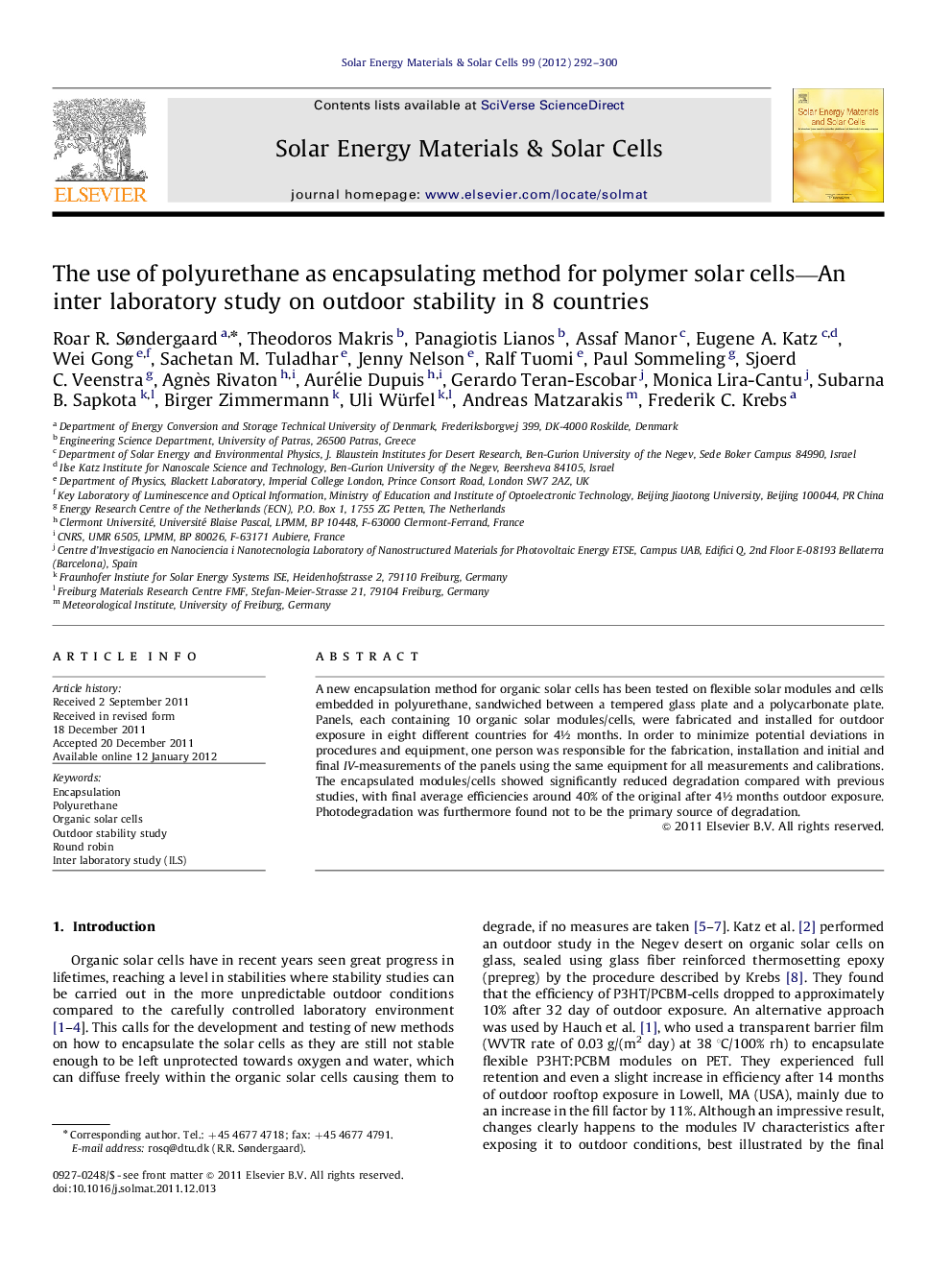| Article ID | Journal | Published Year | Pages | File Type |
|---|---|---|---|---|
| 79030 | Solar Energy Materials and Solar Cells | 2012 | 9 Pages |
A new encapsulation method for organic solar cells has been tested on flexible solar modules and cells embedded in polyurethane, sandwiched between a tempered glass plate and a polycarbonate plate. Panels, each containing 10 organic solar modules/cells, were fabricated and installed for outdoor exposure in eight different countries for 4½ months. In order to minimize potential deviations in procedures and equipment, one person was responsible for the fabrication, installation and initial and final IV-measurements of the panels using the same equipment for all measurements and calibrations. The encapsulated modules/cells showed significantly reduced degradation compared with previous studies, with final average efficiencies around 40% of the original after 4½ months outdoor exposure. Photodegradation was furthermore found not to be the primary source of degradation.
Graphical abstract.Figure optionsDownload full-size imageDownload as PowerPoint slideHighlights► An outdoor inter laboratory stability study on rigid panels was performed in eight countries. ► Deviations by human factors limited by fabrication and measurements performed by a single person. ► Fast low temperature encapsulation method with reduced degradation compared to previous studies. ► Photodegradation showed not to be the main source of degradation.
